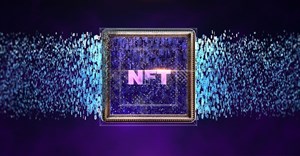#AfricaMonth
Trending
 NHI Bill set to face legal challengesNqobile Dludla
NHI Bill set to face legal challengesNqobile Dludla



 Sewage pollutes KwaZulu-Natal’s popular south coast lagoonsSteve Kretzmann
Sewage pollutes KwaZulu-Natal’s popular south coast lagoonsSteve Kretzmann
Elections 2024
Moral rights reserved? Impact of Creative Commons Licenses: part 2

License variations offered by the Creative Commons
CC BY 4.0 offers six licence variations, as follows:
- CC BY: This licence type allows others to redistribute and adapt licensed works on the condition that attribution is given to the author.
- CC BY-SA: This licence type allows others to redistribute and adapt licensed works on the conditions that attribution is given to the author and that adaptations and/or modifications are licensed to others under identical terms.
- CC BY-NC: This licence type allows others to redistribute and adapt licensed works on the conditions that attribution is given to the author and that adaptations and/or modifications only be used for non-commercial purposes.
- CC BY-NC-SA: This licence type allows others to redistribute and adapt licensed works on the conditions that attribution is given to the author and that adaptations and/or modifications only be used for non-commercial purposes. The adaptation and/or modification must be licensed to others under identical terms.
- CC BY-ND: This licence type allows others to redistribute and copy licensed works whilst providing attribution to the author. However, no adaptations are to be made of the licensed work. This licence type allows for commercial use.
- CC BY-NC-ND: This licence type allows others to redistribute and copy licensed works whilst providing attribution to the author. However, no adaptations are to be made of the licensed work. This licence type does not allow for commercial use.
When examining these licences, it becomes apparent that they exist on a sliding scale of restrictiveness. CC BY is the least restrictive of all licence types whilst CC BY-NC-ND is the most restrictive. It is thus prudent for prospective licensors to choose their preferred licence type carefully.
Right to paternity in works licensed under the Creative Commons
Of the two moral rights to consider, the right to paternity is the easiest to consider as it is the only right which has been granted express provision in every licence type. As can be seen above, all six Creative Commons licence types require that attribution be given to the author.
Section 6 of the CC BY 4.0 Legal Code states that the rights granted to individuals by public licences will terminate automatically upon non-compliance with the licence terms.
Termination will only be cured by express reinstatement from the licensor or where the violation is cured within 30 days from the discovery thereof.
As all licence types require the author to be attributed, the effect of section 6 when considered in conjunction with the requirement for attribution in all instances is a direct enforcement of the right to paternity. Accordingly, section 8 states that no term or condition of the licence shall be waived unless expressly agreed to by the Licensor.
A possible reason for expressly protecting the right to paternity could be that the legal relationship established between the author of works and the public which utilise such works is one built on mutual respect and coexistence.
Accordingly, the right to paternity does not seem to form part of the general waiver of moral rights at present in Section 2(b)(1) of the CC BY 4.0 Legal Code as it is required in all instances. What then would such a waiver be in reference to? An exploration into the application of the right to integrity is therefore required.
Right to integrity in works licensed under the Creative Commons
Open access regimes depend on authors willingly sharing their works, and allowing subsequent adaptations and modifications of these works by others to take place. Ideally, these adaptations and modifications would be relatively unrestricted.
It is no wonder that the right to integrity is not specifically governed within the CC BY 4.0 Legal Code. The ability of an author to object to a distortion of a work has the potential to disturb the freedom which governs the use of these works, and terms like “distort” and “mutilate” are vague, leading to uncertainty on the part of the user.
For authors, CC-BY-ND and CC-BY-NC-ND licence types are ideal for licensing under the Creative Commons, while still protecting their reputations as they both prohibit the creation of adaptations or modifications.
Perspectives on the application of the right to integrity
The general waiver of moral rights in the Legal Code is not absolute. Instead, it is limited insofar as it is necessary to allow users the ability to exercise the rights conferred by the licence. The caveat “but not otherwise” indicates that moral rights may still apply in instances where a user acts outside the scope of the licensed rights.
The provisions enforcing the right to integrity are still less generous in comparison to the provisions made to ensure the right to paternity. The options available to those wishing to license their works under CC BY 4.0 licences are to either:
- Accept all forms of adaptations or modifications, even in instances where those adaptations or modifications mutilate or distort the work, therefore potentially harming the reputation of the author, OR
- Choosing a licence type that restricts adaptations and modifications altogether.
Unported licence
However, a third option presents itself. The older unported* CC BY 3.0 Legal Code made provision for the recognition of the right to integrity in section 4(c), by expressly stating: “You must not distort, mutilate, modify or take other derogatory action in relation to the Work which would be prejudicial to the Original Author's honor (sic) or reputation.”
*The “unported” nature of the CC BY 3.0 Legal Code refers to it being designed for universal applicability. However, licensors can adapt these licence terms to align with the rights afforded by the copyright laws applicable in their jurisdiction. This is referred to as “porting”.
Older licence types such as CC BY 3.0 can still be used. However, the current CC BY 4.0 Legal Code has a much simpler design and is easier to apply internationally. This speaks to the fact that the Creative Commons has moved towards a more user-friendly approach to licensing, where the users of licensed works are better protected from potential copyright infringement claims. This however creates an imbalance between the rights afforded to authors and users.
Custom licence
A fourth option is also available in the form of a custom licence granted by the author. By utilising a custom licence, authors are better able to govern how their works may be used.
However, this type of licence would not have the same level of visibility, respect and interoperability as those offered by well-known organisations such as the Creative Commons.
Also, it is possible that these licences may be more restrictive than those afforded by Creative Commons licences as authors are likely to exert their rights to the detriment of open access ideals.
Finding balance
The main question that arises is whether a more balanced approach to the rights of authors and users may be reached in future CC Legal Codes. Luckily, the terms of the Creative Commons’ licences are under constant re-examination.
As such, the possibility of achieving a more harmonised approach to the integration of moral rights in their licensing considerations are not outside the realm of possibility.
An option is for CC Legal Code drafters to consider incorporating the right to integrity by more accurately stipulating what is prohibited in relation to the licensed works, as opposed to utilising the vague words of “distortion” and “mutilation” as is common in legislation.
By expressly stating that works cannot be adapted into offensive or hateful derivates, and by expanding upon what would be considered offensive or hateful, users would have a clearer sense as to what may/may not be done in relation to a work, when adapting or modifying it under licence.
In conclusion
The applicability of the right to integrity in works licensed under the Creative Commons is still up for debate. In a perfect society, authors would not need to be concerned that others would seek to harm them by distorting their work.
Until then, however, authors who participate in the open access arena should ensure that the terms on which they license their works are sufficiently restrictive to protect their integrity.












